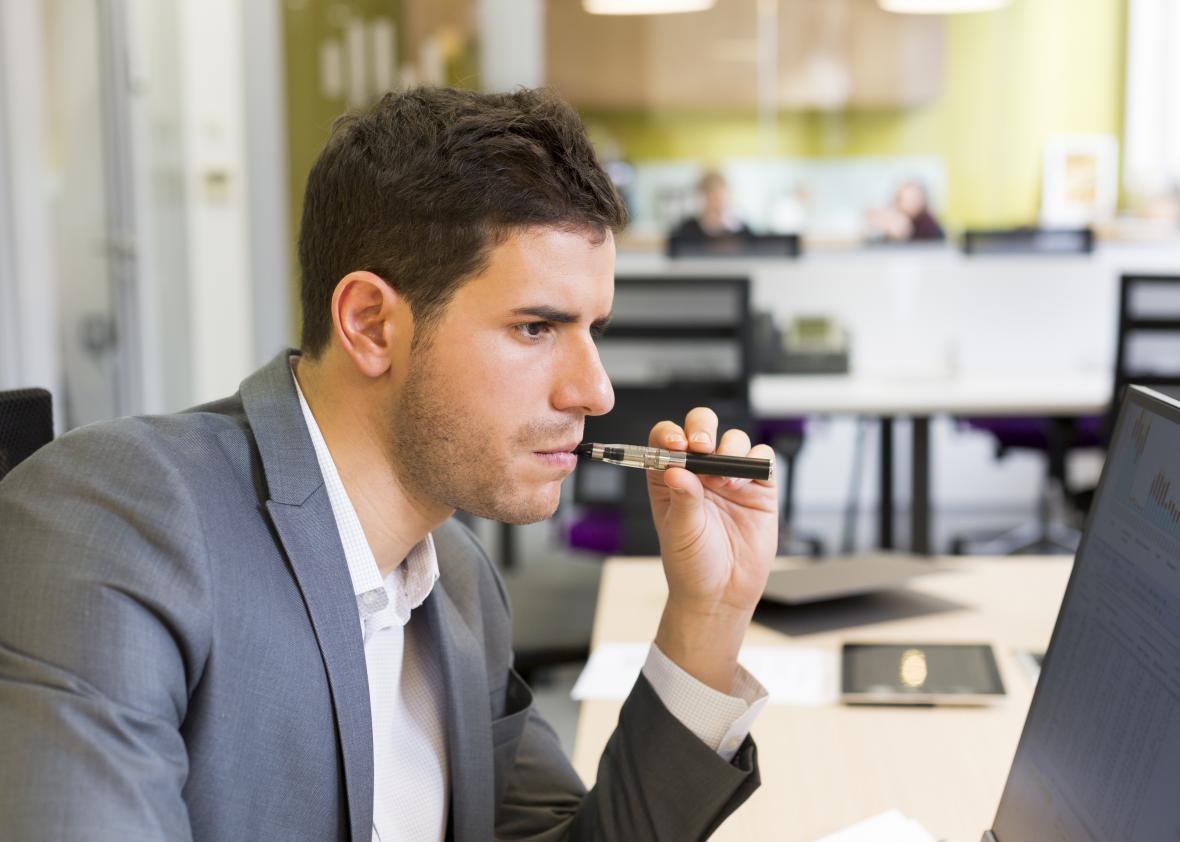Bloomberg Business is out today with a big, enamored feature on “the Edge,” a futuristic office structure in Amsterdam that is alternately referred to as the “smartest building in the world,” “the greenest building in the world,” and the “Uber of buildings.” Just about everything in the Edge is linked to a smartphone app that’s been developed by consulting firm Deloitte, the building’s main tenant. In this superconnected office environment, workers are no longer burdened with small, daily trivialities such as where they should park or sit. The Edge takes care of all of that:
From the minute you wake up, you’re connected. The app checks your schedule, and the building recognizes your car when you arrive and directs you to a parking spot.
Then the app finds you a desk. Because at the Edge, you don’t have one. No one does. Workspaces are based on your schedule: sitting desk, standing desk, work booth, meeting room, balcony seat, or “concentration room.” Wherever you go, the app knows your preferences for light and temperature, and it tweaks the environment accordingly.
But let’s not get caught up in the technical details. The more important thing about the Edge is what it means for “resource efficiency,” or what Bloomberg calls “the best use of humans.” For Deloitte, part of this best use is being achieved through a trendy office concept known as “hot desking.” What is hot desking? An excellent question, which I also sent to Slate staffers in a quick poll. Here are some responses I got:
- Smoking weed at your desk (x2)
- Vaping under your desk
- Having sex on your desk (x2)
- Building a fire under your desk to keep warm because the AC is SO COLD
- Heating the space around your desk in order to improve metabolism, sort of like Bikram yoga
- Assigning desks ad hoc based on who’s there at any given time, because you don’t have space for everyone
That last answer is the closest. The practical goal of hot desking is to distribute too few desks among too many people, in a sort of never-ending office musical chairs. The management-jargony goals, on the other hand, are to “encourage new relationships,” “chance interactions,” and “efficient use of space.” At the Edge, Deloitte is doing this with 1,000 desks for about 2,500 workers, which means 2,500 people who don’t really have their own desk. But they do have … a locker?
Find a locker with a green light, flash your badge, and it’s yours.
Don’t get too attached, though:
Employees are discouraged from keeping a single locker for days or weeks, because part of the het nieuwe werken philosophy is to break people away from their fixed locations and rigid ways of thinking.
Het nieuwe werken, by the way, is a Dutch phrase that loosely translates to “the new way of working.” Which, at least based on the description of things in the Edge, sounds more like the layout of a technologically advanced dystopian high school than a highly efficient consulting firm.
Even at Deloitte, opinions appear to be split. In 2013, a partner at Deloitte Consulting told Business Insider that a similar management concept, the so-called activity-based workplace, was rarely “successfully implemented in its entirety, due mainly to the sheer number of variables at play.” Maybe the next vanguard in het nieuwe werken really should be smoking weed at your desk.
